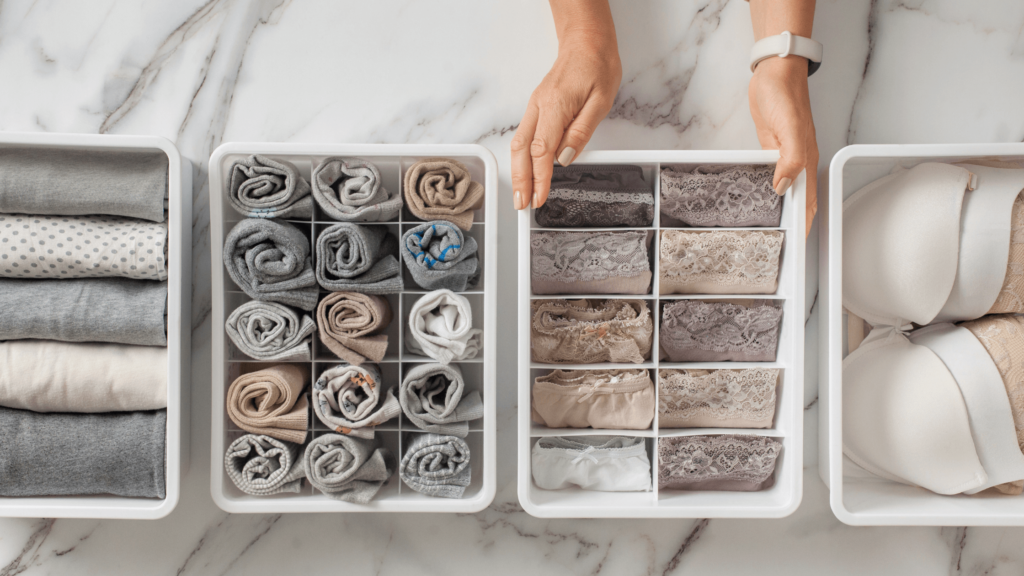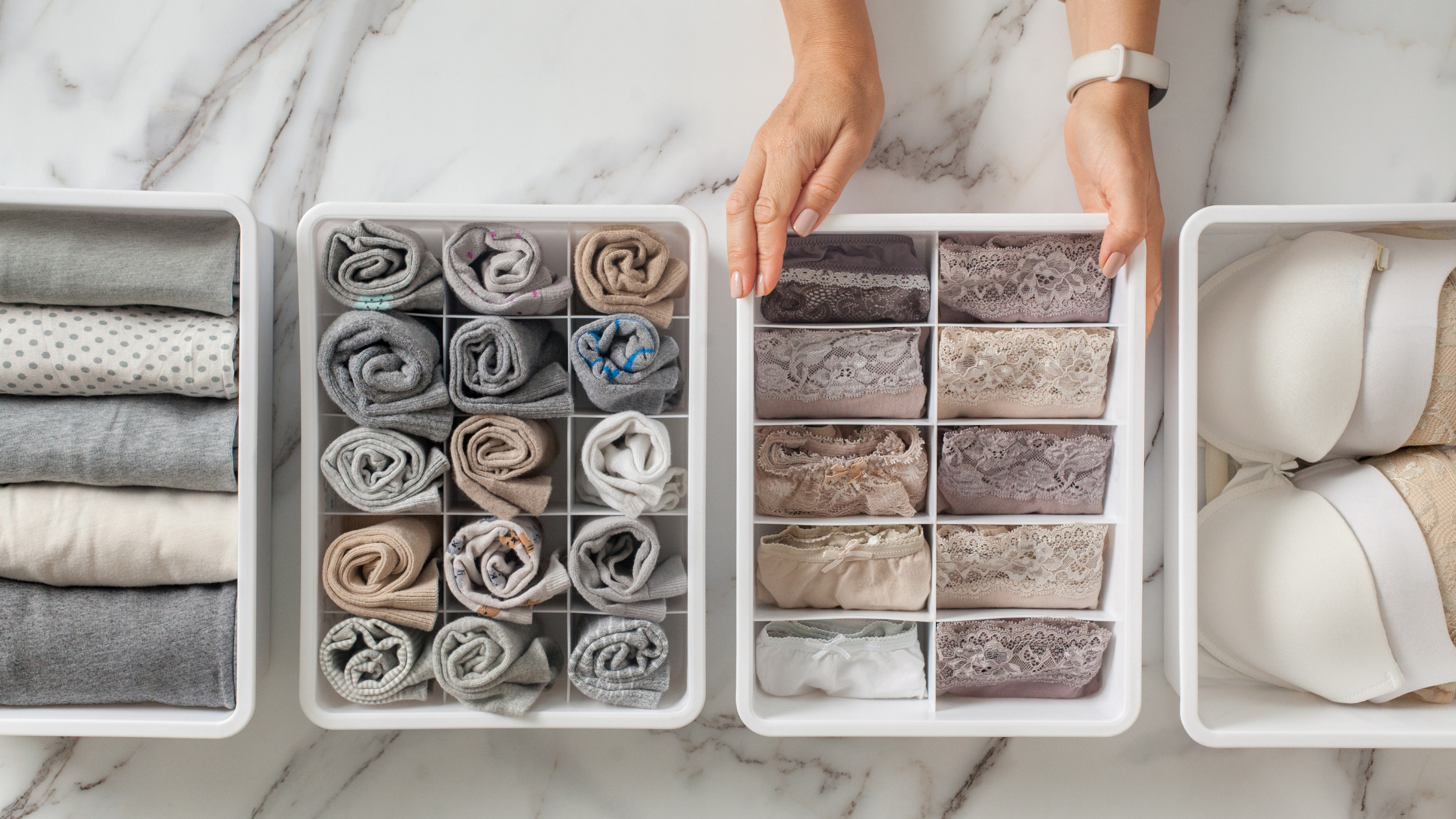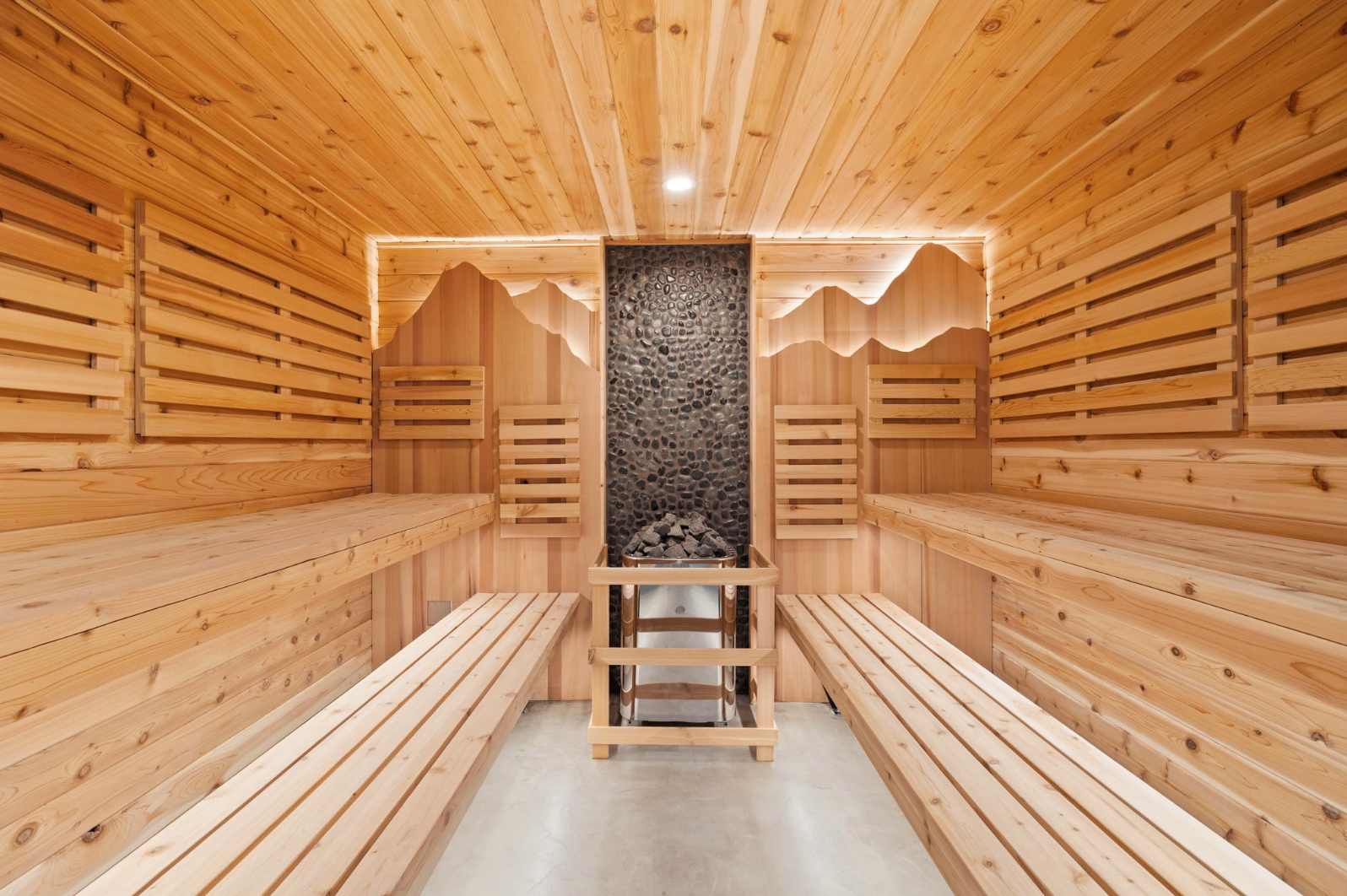
AndreyPopov from Getty Images
It’s that time of year when we all start craving a fresh start. Spring is here and it’s a perfect time to clear out the old and make space for the new—especially in our closets!
We know, decluttering your closet can seem overwhelming. But we promise if you go into it with a plan and a sustainable mindset, not only will you create a more organized space, but you’ll make better choices for your home and the planet.
We’ve partnered with our friend Emily Schum Terry from Get Organized Park City for expert advice on how to declutter sustainably.
Step 1: Empty and Clean
Start by pulling everything out of your closet. Yes, everything, says Schum Terry. This gives you a blank slate to work with and allows you to clean the space thoroughly. Wipe down shelves, dust, and vacuum the area to start fresh.
Step 2: Categorize Your Items
As you remove items, sort them into categories like jeans, dresses, sweaters, and hats. This step is crucial because it helps you see how much you own in each category, making it easier to decide what stays and what goes, says Schum Terry.
Step 3: Declutter with Sustainability in Mind
Now comes the hard part: deciding what to keep and what to part with. Schum Terry suggests creating five piles (Keep, Sell, Donate, Toss, Keepsakes) to help you sort through your items:
- Keep: These are the items you love and wear regularly. Place them in a pile to be put back in your closet
- Sell: Consider selling gently used items. You can use local second-hand shops, Facebook Marketplace, or specialized platforms like The RealReal for designer items. Selling not only ensures that your items will be appreciated, but it also adds a little extra cash to your pocket.
- Donate/Hand-Me-Downs: While donating clothes might seem like the most sustainable choice, it’s important to be aware of the “donation mindset” trap. The reality is that a significant portion of donated clothing never actually finds a new home. In fact, it’s estimated that only 10-20% of clothes donated to thrift stores are resold locally. The rest often ends up being shipped overseas, where it can flood local markets and undermine local textile industries, or it eventually gets sent to landfills.
To minimize the impact of your donations, consider other options first:
- Give Away Locally: Offer your items on platforms like your local Buy Nothing Facebook group, where you can connect directly with people in your community who will use them.
- Hand-Me-Downs: If you have family or friends who will genuinely use the items, this can be a great way to ensure they get a second life.
- Toss: While it’s ideal to avoid sending anything to the landfill, sometimes it’s unavoidable. Before tossing, think about how you can repurpose old clothing. Torn or stained items can often be cut up and used as cleaning cloths or rags.
- Keepsakes: Sentimental items like wedding dresses or baby clothes may not be used regularly, but they hold emotional value. Schum Terry suggests storing these items in labeled bins and keeping them in less accessible areas of your home, like a high shelf or an attic, to free up prime closet space.
Step 4: Organize Your Space
With your items sorted, it’s time to organize. Designate zones in your closet for each category of clothing, prioritizing what you use most. For example, if you wear jeans and t-shirts daily, make sure these items are easily accessible. Consider the following when organizing:
- Long Hanging vs. Short Hanging Space: Ensure you have enough space for dresses and coats while maximizing shorter hanging spaces for shirts and jackets.
- Folding vs. Hanging: Items like jeans and sweaters often fold well and look neat on shelves. Hang items like t-shirts and blouses for easy access.
- Drawers: Use drawers for smaller items like underwear, socks, and workout clothes. If you don’t have built-in drawers, consider adding baskets or bins.

Kostikova from Getty Images
Step 5: Final Touches
Once you’ve organized everything, step back and assess your work. Matching hangers can reduce visual clutter and give your closet a polished look. Schum Terry says if you need bins or baskets, be sure to measure your shelves before purchasing to ensure a perfect fit. Whenever possible, reuse what you already have or repurpose items from other parts of your home.
Step 6: Enjoy Your Closet
Now take a deep breath, step back, and admire your freshly decluttered closet. Doesn’t it feel so much better? You didn’t just organize your space—you made thoughtful choices that help reduce waste and support a more sustainable, circular lifestyle. Every item you chose to keep, pass along, or repurpose was a step toward living with more intention and less excess.
So whether you’re getting dressed for a night out or just tossing on your favorite cozy sweater, you’ll know your closet is filled with pieces that truly serve you—and that your efforts made a
Happy (sustainable) decluttering, friend!





Comments +